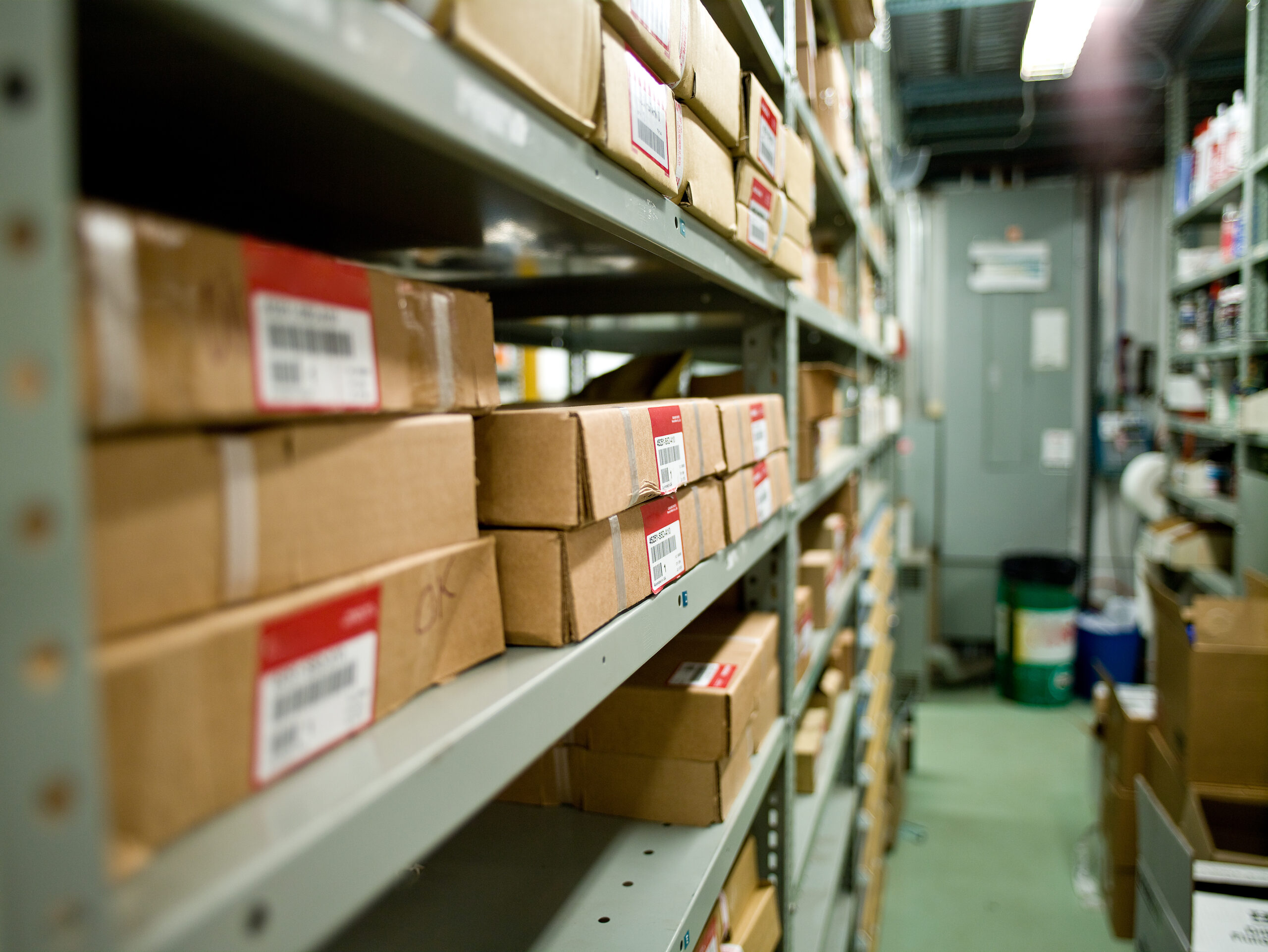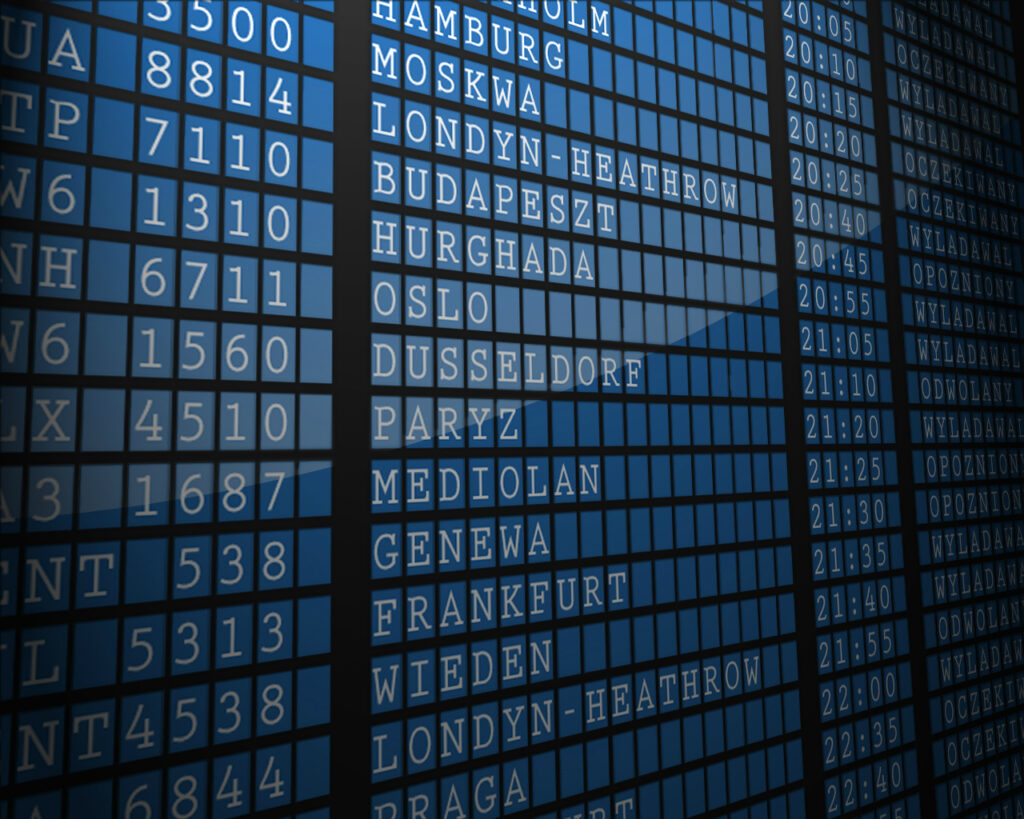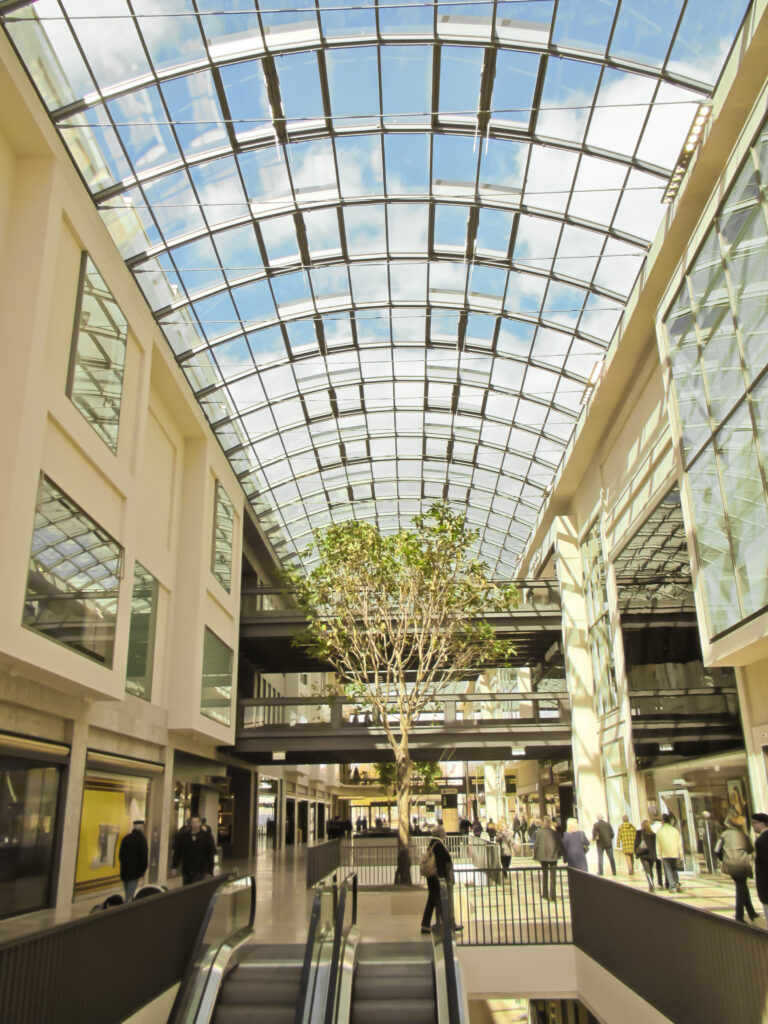Lost and Found Software: The Ultimate Guide in 2023
Introduction
Lost and found software – four words that may seem inconsequential at first glance, yet hold the power to revolutionize your venue’s operations.
Imagine a world where misplaced items are swiftly reunited with their owners, without causing stress or frustration for both parties. It’s a world where your staff works more efficiently and your customers leave with a positive experience, even if they initially lost something valuable.
In this definitive guide, our goal is to help you navigate the intricate world of lost and found software, making it easy for you to choose, implement, and tailor the ideal solution for your venue.
We’ll delve into the numerous benefits that lost and found software can bring, not only to your venue, but also to your customers. By exploring the key features to look for and examining how different types of venues can uniquely benefit from these systems, you’ll gain a comprehensive understanding of how lost and found software can transform your operations. So, whether you manage a bustling airport or a tranquil college campus, our comprehensive guide is here to empower you in making an informed decision that elevates your venue’s lost and found process.
Join us on this journey as we uncover the secrets to selecting and implementing the perfect lost and found software for your venue, turning those once-lost items into a treasure trove of customer satisfaction and operational efficiency.
Table of Contents:
- Introduction
- Understanding lost and found software
- How does lost and found software work?
- Benefits of using lost and found software
- Key Features to look for in lost and found software
- Benefits of lost and found software for specific venue types
- How to evaluate lost and found software
Understanding Lost and Found Software
What is Lost and Found Software?
Lost and found software is a technology solution designed to streamline the process of managing and returning lost items to their rightful owners. By leveraging the power of software, these systems replace traditional, time-consuming, and often disorganized manual systems with a centralized, user-friendly platform. In short, lost and found software enables venues to efficiently track, store, and recover misplaced items, ensuring a seamless experience for both staff and customers alike.
At its core, this software serves as a comprehensive digital database, cataloging lost items and their associated information. With the ability to quickly add, update, and search for items within the system, your venue’s staff can effortlessly match found items with their respective owners.
Moreover, many software products include features such as automated notifications, customer communication, and in-depth reporting capabilities, providing you with invaluable insights into your venue’s lost and found operations.
By embracing a technology solution, you’re not only investing in a tool that simplifies your venue’s lost item management, but also fostering an environment where customer satisfaction and trust are paramount. As the world continues to embrace digital solutions, it’s essential to stay ahead of the curve by incorporating lost and found software into your venue’s operational toolkit.
How Does Lost and Found Software Work?
Most lost and found software functions as a centralized system that streamlines the entire lost and found process, from logging misplaced items to collecting claims to reuniting items with their owners. It accomplishes this through a series of interconnected features and functionalities designed to simplify and automate various aspects of lost item management.
Here’s an overview of how the software typically works:
Item Registration:
When a lost item is found at your venue, staff members can quickly log it into the system, adding essential details such as a description, location, and time of discovery. They can also upload images and categorize items to make it easier for customers to identify their lost belongings.
Owner Identification:
Customers who have lost an item can submit a claim or inquiry through an online portal or in-person, providing relevant information about the item and their contact details. The lost and found software then matches the submitted information with the database of registered lost items, increasing the chances of a successful reunion.
Customer Communication:
The software enables seamless communication between staff and customers throughout the process, ensuring everyone stays informed about the status of the lost item.
Item Return:
Upon confirming a match, the system helps coordinate the return of the item to its owner, either through in-person pick-up or shipping arrangements.
Reporting and Analytics:
Lost and found software provides valuable insights into the performance of your venue’s lost and found operations through detailed reporting and analytics features. This allows you to monitor trends, identify areas for improvement, and continually optimize your lost and found processes.
By connecting these essential components, software products create a seamless, efficient, and customer-centric experience that benefits both your venue and the people who visit it.
Benefits of Using Lost and Found Software
Lost and found software offers a multitude of advantages that positively impact your venue and its customers. By streamlining and automating the lost and found process, this software solution can significantly enhance the overall experience for everyone involved.
Advantages of using Lost and Found Software for Venues:
For venues, having a well-run lost and found that utilizes software is key to having a superior guest experience. Lost and found software streamlines the management of misplaced items, reducing the time and effort required by your staff. By eliminating manual processes and paperwork and automating key components of the lost and found process, you can help reduce labor costs associated with managing misplaced items and your team can allocate more time to other essential tasks.
Lost and found software can also help ensure the safekeeping of lost items, minimizing the risk of theft or misplacement. Data security features also protect customers’ personal information, maintaining their privacy and trust.
In addition, using software allows for a more organized and transparent process, providing customers with regular updates on their lost items. This fosters trust and satisfaction, ultimately improving your venue’s reputation and customer loyalty.
For the managers, lost and found software often offers reporting and analytics features that enable your venue to monitor trends and identify areas for improvement, allowing you to continually optimize your lost and found operations.
Advantages of using Lost and Found Software For Customers:
Using lost and found software is great for customer satisfaction. The software’s centralized database and matching capabilities increase the likelihood of lost items being reunited with their owners, providing customers with a more positive and seamless experience. Customers can access the lost and found system online to submit claims or inquiries and receive updates on their items’ status, allowing them to stay informed and engaged throughout the process.
By integrating lost and found software into your venue’s operations, you create a scenario that benefits both your organization and the people you serve. With increased efficiency, enhanced customer service, and valuable insights at your disposal, lost and found software is a powerful tool that can elevate your venue’s performance and reputation.
Key Features to Look for in Lost and Found Software
Not all software is created equal. Some products are very barebones while others have dozens of features for complicated or customized scenarios. However, when evaluating different software solutions, you should make sure the software, at a minimum, has the following features:
Item Management and Tracking
Item management and tracking is the cornerstone of any effective lost and found software solution. This feature allows your venue to maintain a comprehensive, organized, and easily searchable database of lost items, significantly improving the lost and found process for both staff and customers. Within item management, here are the key features that you should consider:
Customizable Item Entry
The software should enable staff to enter detailed information about each found item, such as descriptions, photos, locations, and time of discovery. Customizable fields and categories allow for better organization and more accurate item matching.
Advanced Search and Filtering
A robust search function is crucial for efficiently locating lost items within the database. The software should support advanced search options and filtering capabilities, enabling staff to quickly find items based on specific criteria, such as keywords, categories, or date ranges.
Item Status Tracking
The software should facilitate tracking the status of each item throughout the recovery process, from initial registration to final return. This includes tracking items that have been claimed, unclaimed, or donated, as well as monitoring storage locations and durations.
Bulk Actions
To further enhance efficiency, the software should offer the ability to perform bulk actions, such as updating the status or location of multiple items simultaneously.
Item Matching and Verification
The system should automatically compare customer claims with registered lost items to identify potential matches. Additionally, it should provide tools to help staff verify item ownership, such as the ability to request additional information or documentation from the customer.
By prioritizing item management and tracking features in your lost and found software, you can ensure that your venue is equipped with a powerful, efficient, and user-friendly solution that streamlines the entire lost and found process.
Customer Communication and Notification
Effective customer communication is an essential feature of any high-quality lost and found software, as it fosters trust and satisfaction among your patrons. A robust communication system not only keeps customers informed about the status of their lost items but also simplifies the process of coordinating the return of found belongings. Key aspects of customer communication and notification features include:
Notifications
The software should notify customers when a potential match is found, as well as provide updates throughout the recovery process. Timely alerts help customers stay informed, reducing their anxiety and frustration.
Shipping Coordination
In addition to communicating about item matches and verification, the software should offer a seamless way for customers to coordinate the return of their lost items. This includes the ability to automatically communicate with customers about shipping arrangements, such as providing shipping options, collecting delivery addresses, and tracking shipment status.
Customizable Templates
To ensure consistency and professionalism in your customer communications, the software should include customizable templates for email notifications. These templates can be tailored to your venue’s branding and tone, enhancing the overall customer experience.
By prioritizing customer communication and notification features in your lost and found, you can create a transparent and user-friendly experience that keeps customers informed and engaged throughout the entire process, ultimately enhancing customer satisfaction and loyalty.
Reporting and Analytics
In-depth reporting and analytics capabilities are crucial features to look for in lost and found software, as they provide valuable insights into your venue’s lost and found operations. By analyzing trends, patterns, and performance metrics, you can identify areas for improvement and make data-driven decisions that optimize your processes. Key aspects of reporting and analytics features include:
Customizable Reports
The software should offer a variety of customizable report templates that allow you to generate detailed and relevant data based on your specific needs. This includes reports on item recovery rates, unclaimed items, storage durations, and more.
Real-Time Data
Access to real-time data enables your staff to monitor the performance of your lost and found operations as they unfold, helping you identify issues and opportunities as they arise.
Visual Dashboards
Easy-to-read visual dashboards can help you quickly understand key metrics and trends at a glance. Look for software that offers customizable dashboards with graphs, charts, and other visual aids to simplify data analysis.
Data Export and Sharing
To facilitate collaboration and further analysis, the software should support data export and sharing capabilities. This allows you to easily share reports and insights with your team or integrate the data with other tools and systems.
Historical Analysis
The ability to analyze historical data can reveal trends and patterns that may impact your lost and found operations over time. Look for software that offers tools for comparing data across different periods, helping you identify changes in performance and customer behavior.
By incorporating comprehensive reporting and analytics features into your lost and found, you gain a deeper understanding of your venue’s operations, empowering you to make informed decisions that improve efficiency, customer satisfaction, and overall performance.
Integration with Existing Processes and Websites
Lost and found software should seamlessly integrate with your venue’s existing processes and website, ensuring a smooth transition and a user-friendly experience for both staff and customers. Choosing a software solution that can adapt to your current workflows and easily integrate with your online presence is crucial for maximizing the benefits of the system. Key aspects of integration with existing processes and websites include:
Flexible Workflow Adaptation
The software should be customizable to align with your venue’s established lost and found procedures, minimizing the need for extensive process reengineering. This enables your staff to quickly adapt to the new system while preserving the familiarity of their existing workflows.
Web-Based Platform
A web-based lost and found software solution ensures easy access for staff and customers alike, without the need for installing additional applications. This enables users to access the system from any device with an internet connection, enhancing convenience and efficiency.
Website Integration
Any solution you choose should offer seamless integration with your venue’s website, allowing customers to easily submit claims, view found items, and communicate with staff without leaving your site. This creates a cohesive experience that aligns with your venue’s branding and online presence. In addition, the software should support customizable branding elements, such as logos, colors, and fonts. This ensures that the lost and found portal feels like a natural extension of your venue’s website.
Easy Implementation
The software should be designed for quick and easy implementation, minimizing the disruption to your venue’s operations during the transition period. Look for solutions that offer comprehensive support and guidance throughout the setup process to ensure a smooth integration.
By selecting lost and found software that integrates effortlessly with your existing processes and website, you can create a unified, efficient, and customer-centric experience that elevates your venue’s lost and found operations while preserving the familiarity of your current workflows.
Mobile and Tablet Compatibility
Mobile and tablet compatibility is a vital feature to consider when selecting lost and found software, as it ensures that staff and customers can access the system from their preferred devices with ease. Opting for a solution with a mobile-optimized website offers several advantages over standalone apps. A mobile-optimized website eliminates the need for users to download and install a separate app, making the lost and found process more convenient and accessible for both staff and customers.
Additionally, with a mobile-optimized website, the lost and found software is accessible from any device with an internet connection, regardless of the operating system. This ensures compatibility across a wide range of smartphones and tablets, catering to the preferences of all users.
A mobile-optimized website is designed to provide an intuitive and user-friendly experience, with responsive design elements that adapt to the screen size and orientation of the device in use. This ensures that customers and staff can easily navigate the system and perform necessary tasks with minimal effort.
By prioritizing mobile and tablet compatibility in your lost and found software, you can provide a seamless, user-friendly experience for staff and customers alike, increasing accessibility and convenience for all parties involved in the lost and found process.
Security and Data Protection
In today’s digital landscape, security and data protection are paramount, especially for venues such as hospitals and other establishments that handle sensitive information. When evaluating software, it is essential to prioritize end-to-end encryption and robust data security measures to ensure the privacy and protection of both lost items and personal information. Key aspects of security and data protection to consider include:
End-to-End Encryption
Look for a software solution that employs end-to-end encryption, safeguarding all data as it travels between users and the system, as well as while it is stored within the platform. This comprehensive encryption helps prevent unauthorized access to sensitive information.
Encryption of at least AES 256 at Rest
Ensure that the software uses Advanced Encryption Standard (AES) 256-bit encryption or higher to protect data when it is stored, also known as “at rest.” This powerful encryption method offers a high level of security, making it extremely difficult for intruders to access stored information.
Encryption of at least Strict SSL for Data in Transit
For optimal data protection while information is being transmitted, or “in transit,” the software should employ Strict Secure Sockets Layer (SSL) encryption. This ensures that all communications between users and the system are encrypted and secure, safeguarding sensitive data from potential eavesdropping or tampering.
By prioritizing security and data protection features in your lost and found software, you can provide your customers with peace of mind, knowing that their personal information and lost items are safeguarded by robust encryption and stringent security measures.
How lost and found software can meet the needs of different venues
Having explored the essential features and functionalities of lost and found software, it’s time to delve into how these solutions cater to the unique needs of various types of venues. Each venue, whether it’s a hotel, transportation hub, amusement park, hospital, university, or shopping mall, faces distinct challenges when it comes to managing lost and found items. An effective software solution not only addresses these challenges but also enhances the overall experience for both staff and customers.
In the following section, we’ll examine the specific requirements and benefits that lost and found software can provide for different venues, shedding light on the ways in which these solutions can be tailored to address the diverse needs of each environment. This will further emphasize the importance of selecting software that aligns with your venue’s unique demands and objectives, ensuring a seamless and efficient lost and found process.
Lost and Found Software for Hotels and Resorts
Lost and found software can be a game-changer for hotels and resorts, elevating the guest experience and streamlining the process of reuniting visitors with their lost belongings. As guests often require shipping to retrieve their lost items, it’s essential for hotel and resort operators to choose a solution that offers built-in shipping capabilities.
Guests value prompt and efficient service, and implementing a lost and found software solution can significantly improve their experience. By streamlining the process of reporting, locating, and returning lost items, hotels and resorts can demonstrate their commitment to guest satisfaction, fostering loyalty and positive reviews.
As many hotel and resort guests may not be local, it’s crucial to offer seamless shipping options for lost items. Look for solutions with integrated shipping features that allow users to effortlessly coordinate the return of their belongings, eliminating the need for manual intervention from hotel staff.
Hotels and resorts often have multiple departments and service areas, making it challenging to manage lost items effectively. Software provides a centralized database that consolidates all reported items, ensuring that staff can easily access and manage lost property information from one platform.
By automating many aspects of the lost and found process, hotels and resorts can save time and resources, allowing staff to focus on other crucial tasks that enhance guest satisfaction. This translates into improved operational efficiency and better overall service quality.
Furthermore, promptly addressing lost item inquiries and successfully returning belongings can significantly impact a hotel or resort’s reputation. Implementing a robust solution can help maintain a positive image, attracting more guests and ensuring repeat business.
By incorporating software into lost and found operations, hotels and resorts can create a seamless, efficient, and guest-centric process that bolsters guest satisfaction, optimizes resources, and enhances their overall reputation.
Lost and Found Software for Transportation Hubs (Airports, Train Stations, Bus Terminals)
For transportation hubs such as airports, train stations, and bus terminals, lost and found software plays a critical role in managing the high volume of lost items that inevitably accumulate. Streamlining the lost and found process is essential to cope with the massive influx of items and provide efficient service to travelers.
With the high volume of lost items, transportation hub staff need an efficient system that saves time and reduces manual labor. Lost and found software automates many aspects of the process, allowing staff to focus on other essential tasks and improving overall operational efficiency.
Transportation hubs process thousands of passengers daily, leading to an overwhelming number of lost items. Lost and found software enables staff to efficiently manage and organize these items, ensuring that each item is logged and stored systematically for easy retrieval. Airports, in particular, require specialized shipping solutions for lost items, as passengers often need their belongings shipped to various destinations, both domestic and international. A lost and found software with integrated shipping features can simplify this process and cater to the unique needs of airports.
Implementing a streamlined lost and found process at transportation hubs demonstrates a commitment to providing a positive experience for travelers. Efficiently handling lost item inquiries and returns can significantly impact passenger satisfaction, leading to positive reviews and word-of-mouth recommendations.
By integrating lost and found software into their operations, transportation hubs can manage the significant volume of lost items, provide a seamless experience for travelers, and enhance operational efficiency. Customizable software features ensure that each hub’s unique needs are met, creating an effective and tailored solution.
Lost and Found Software for Amusement Parks and Entertainment Complexes
Amusement parks and entertainment complexes have unique challenges when it comes to managing lost and found items. With large crowds, vast areas, and diverse attractions, implementing an effective lost and found software solution is crucial for optimizing the visitor experience. Amusement parks often span large areas, making it difficult to locate and manage lost items. Lost and found software allows staff to easily log items found across the park, enabling efficient coordination and retrieval of lost belongings.
With the fast-paced nature of amusement parks, it’s essential for visitors to receive updates about their lost items. Lost and found software can send notifications to visitors when their items are found, fostering a sense of trust and enhancing their overall experience.
Amusement parks aim to provide a seamless experience for their visitors, and implementing a robust lost and found software solution helps streamline guest services. By centralizing the lost and found process, parks can efficiently handle inquiries, reducing wait times and improving visitor satisfaction.
Furthermore, amusement parks often employ seasonal staff who may not be familiar with the lost and found procedures. Lost and found software provides an intuitive and user-friendly platform that simplifies staff training, ensuring consistent and efficient service even during peak seasons and the ability to add and remove seasonal workers as needs change with the seasons.
By focusing on the unique needs of amusement parks and entertainment complexes, lost and found software can significantly improve the visitor experience, streamline operations, and ensure that guests leave with positive memories, increasing the likelihood of repeat visits and positive recommendations.
Lost and Found Software for Hospitals and Medical Centers
In the healthcare sector, hospitals face distinct challenges when it comes to managing lost and found items as well as patient valuables. Privacy, security, and efficiency are of utmost importance, making it crucial to implement a specialized lost and found software solution. Hospitals also generally require software that can manage both misplaced items and patient valuables. The software should allow staff to securely log, store, and track personal belongings, ensuring that patients can retrieve their valuables with ease and confidence.
Given the sensitive nature of the healthcare environment, it’s vital that all software adheres to strict data protection regulations, such as the Health Insurance Portability and Accountability Act (HIPAA). The software should prioritize patient privacy and provide robust security measures to protect personal information.
In the same vein, to maintain patient privacy and security, the software should offer controlled access to authorized personnel only. Role-based access ensures that staff can only access the information necessary for their specific job functions, helping prevent unauthorized access to sensitive data. Maintaining accurate records and tracking the handling of lost items and patient valuables is essential in a hospital setting. The software should provide comprehensive audit trails, enabling management to monitor and review staff actions and maintain accountability.
Healthcare professionals are busy and often have much more urgent matters to address – these can literally be life or death. In a great lost & found software, automated processes and centralized databases can help reduce the time spent managing lost items and patient valuables, allowing staff to focus on patient care.
By addressing the unique needs and challenges faced by hospitals, lost and found software can greatly enhance patient privacy, security, and overall satisfaction. By prioritizing efficiency and streamlining workflows, healthcare professionals can focus on their primary responsibility – providing the best possible care to their patients.
Want to learn more about lost and found software for hospitals? Check out our case study here!
Lost and Found Software for Universities and Colleges
Universities present unique challenges in managing lost and found items due to the vast campuses, diverse stakeholders, and high expectations of students for premium services. Implementing a unified lost and found software solution is crucial for streamlining the process and enhancing the overall university experience.
University campuses often have multiple entities handling lost and found items, such as the student center, campus police, facilities management, and more. A unified lost and found software solution can consolidate data from all stakeholders, ensuring efficient management and facilitating seamless communication across departments. In addition, university campuses host a diverse range of students, staff, and faculty, each with varying levels of technological proficiency. An intuitive and user-friendly lost and found software platform ensures that all users can easily report, search for, and retrieve lost items without any barriers.
Today’s students expect premium services and amenities, as evidenced by universities like LSU building a lazy river pool. Implementing a robust lost and found software solution can elevate the student experience, demonstrating the university’s commitment to providing top-notch services in all aspects of campus life.
As students rely heavily on smartphones and mobile devices, it’s crucial for universities to offer a mobile-optimized lost and found solution. This enables students to access the platform on-the-go, making it easier for them to report and retrieve lost items, and ensuring a seamless experience.
Lost and found software can also contribute to campus security by providing a centralized database for lost items and valuables. This allows campus police to easily track and manage found property, potentially identifying trends or suspicious activities that may require further investigation.
By addressing the unique challenges faced by universities, lost and found software can significantly improve the campus experience for students, faculty, and staff. A unified, user-friendly, and mobile-optimized solution demonstrates a commitment to excellence in service and contributes to the overall appeal and reputation of the institution.
Lost and Found Software for Shopping Malls
Shopping malls face unique challenges when managing lost and found items, as they often have a large number of visitors and various stores, resulting in a significant volume of misplaced items. Implementing an effective software solution is essential for streamlining the process and enhancing the overall customer experience.
Shopping malls attract a large number of visitors, leading to a substantial volume of lost items. Lost and found software allows mall staff to efficiently log, store, and organize these items, ensuring that each one is systematically categorized for easy retrieval. With the vast expanse of shopping malls, it is crucial for the lost and found software to offer the ability to log exactly where an item was found. This feature makes it easier for customers to locate and retrieve their belongings.
By implementing a streamlined lost and found process, shopping malls demonstrate a commitment to providing a positive customer experience. Efficiently handling lost item inquiries and returns can significantly impact customer satisfaction, leading to positive reviews and increased foot traffic.
Furthermore, shopping malls frequently host events and promotions that attract large crowds. A lost and found software solution designed for malls should be able to handle event-driven surges in lost items, ensuring efficient management during peak times.
By addressing the unique needs of shopping malls, software can significantly improve the customer experience, streamline operations, and enhance the overall appeal of the shopping environment. Customizable software features ensure that each mall’s specific needs are met, creating an effective and tailored solution.
Assessing Your Venue’s Needs
Now that we’ve talked about the benefits lost and found software can bring to various types of venues, let’s talk a bit about how to select a lost and found product that meets the need or your specific venue. Before selecting a lost and found software, it is crucial to assess your venue’s unique needs and requirements. Every venue type and size has its own set of challenges and considerations, so it’s important to understand these factors to ensure a successful implementation.
Consider how the lost and found software will fit into your venue’s existing processes. It is essential to choose a solution that seamlessly integrates with your operations, minimizing disruptions and facilitating a smooth transition.
Identify the types of customers who frequently lose items at your venue. Do they require shipping services to retrieve their belongings, or is a simple database sufficient for managing lost items? Do you need a public list of found items and the ability for customers to submit claims online? Understanding your customer’s needs will help you choose a software solution that best serves your venue.
Once you’ve nailed down the basics, you should evaluate any other unique requirements your venue may have. This could include specific security measures, customization options, or reporting capabilities. By identifying these needs upfront, you can select a lost and found software that addresses all aspects of your venue’s operations.
Once you’ve determined what you need, it’s crucial to build consensus among all stakeholders involved in the lost and found process. This ensures everyone is on the same page regarding the software’s features and capabilities, leading to a more successful implementation and a unified approach to managing lost items.
Taking the time to assess your venue’s unique needs and building consensus among stakeholders will help ensure a successful software selection process. By carefully considering each aspect of your operations, you can choose a lost and found solution that truly meets the needs of your venue and its customers.
How to Compare Lost and Found Software Providers
When evaluating various lost and found software options, it’s essential to compare the features, capabilities, and pricing of each solution to determine the best fit for your venue. By thoroughly examining each option, you can ensure that your final choice aligns with your venue’s specific needs and requirements.
First, take your needs assessment from above and evaluate how the different options compare. Create a list of essential features and functionalities you require in a lost and found software and compare the offerings of each solution against this list to identify the ones that meet your needs. This will help you narrow down your options and focus on the most suitable choices.
Budget is also a key component. Consider the pricing structure of each software option. Determine whether the cost aligns with your budget and offers value for money. This will help you choose the solution that fits best for your needs. Most lost and found software will charge a per-user or per year rate so understanding the different pricing models is key.
From there, gather insights from other users who have experience with the lost and found software solutions you are considering. Ask for recommendations from colleagues or industry peers to get a better understanding of the software’s performance, reliability, and customer support. Investigate the reputation of each software vendor. A company with a strong track record of success and excellent customer service will likely provide a more reliable and effective solution for your venue.
By diligently comparing different lost and found software solutions and considering factors such as features, pricing, user reviews, and vendor reputation, you can make a well-informed decision that best serves your venue’s unique needs. A thoughtful comparison process will ultimately lead to a successful software implementation and a more efficient lost and found system for your venue.
Get a demo of each lost and found software product
One of the most effective ways to determine if a lost and found software is the right fit for your venue is by requesting product demos and trials. This hands-on approach allows you to gain a deeper understanding of how the software will function in your specific environment and offers the opportunity to assess the level of customer support provided by the vendor.
A live product demo allows you to see the lost and found software in action, tailored to your venue’s unique needs. This helps you visualize how the solution will integrate with your existing processes and enhances your understanding of its capabilities.
During the demo, you can also gauge the quality of customer support offered by the software provider. This is a crucial aspect to consider, as responsive and knowledgeable support is essential for ensuring a smooth implementation and ongoing success.
A demo also allows you to assess the user-friendliness of the lost and found software. This is a critical aspect, as an intuitive and easy-to-use system will result in higher adoption rates among staff and ultimately lead to a more efficient lost and found process.
In addition to a demo, look for products that offer free trials. A free live trial of the software provides an opportunity to test its features and functionality in your venue’s actual environment. This hands-on experience can reveal any potential challenges or shortcomings, allowing you to make an informed decision based on real-world usage.
Requesting product demos and trials is an invaluable step in the lost and found software selection process. It enables you to gain a customized understanding of the solution, evaluate customer support, and test the software in your specific environment. This hands-on approach will ultimately lead to a more informed decision and a successful software implementation for your venue.
Conclusion
Lost and found software serves as a powerful tool for venues of all types, streamlining the process of managing lost items and ensuring a positive experience for both customers and staff.
From assessing the specific demands of various venue types – such as hotels, transportation hubs, amusement parks, hospitals, universities, and shopping malls – to evaluating the essential features and functionalities of each solution, the journey to implementing an effective lost and found software is a multi-faceted endeavor.
By diligently comparing different solutions, reading reviews, seeking recommendations, and participating in product demos and trials, you can confidently choose a software that aligns with your venue’s objectives and enhances its overall operations.
Additionally, it’s important to ensure that your chosen software offers ongoing support, updates, and integration with your existing processes and systems. This will enable your venue to maintain a seamless and efficient lost and found system that continues to evolve and adapt to the changing needs of your business and customers.
Ultimately, embracing a robust lost and found software solution will not only improve the way your venue handles lost items but also elevate the customer experience and strengthen your reputation as a forward-thinking, customer-centric organization. So, take the time to evaluate your options and choose a solution that best fits your venue’s unique needs – the benefits will be well worth the effort.










